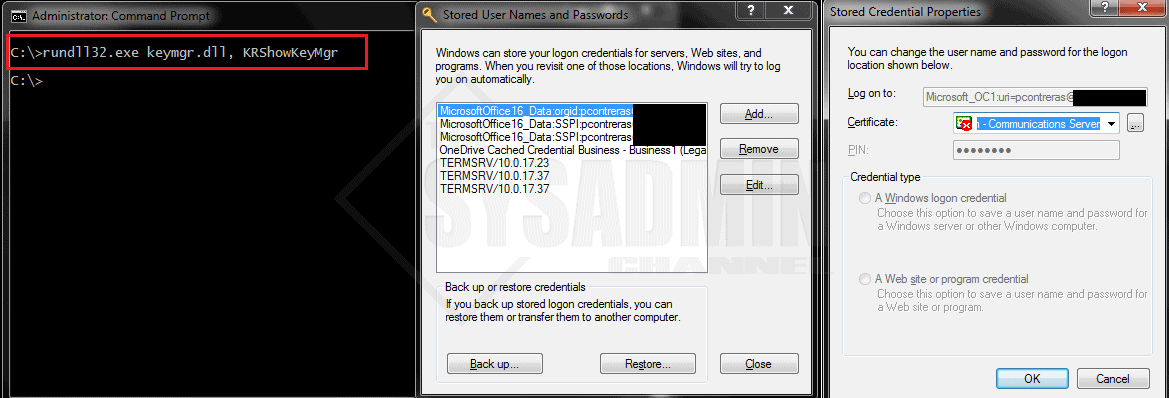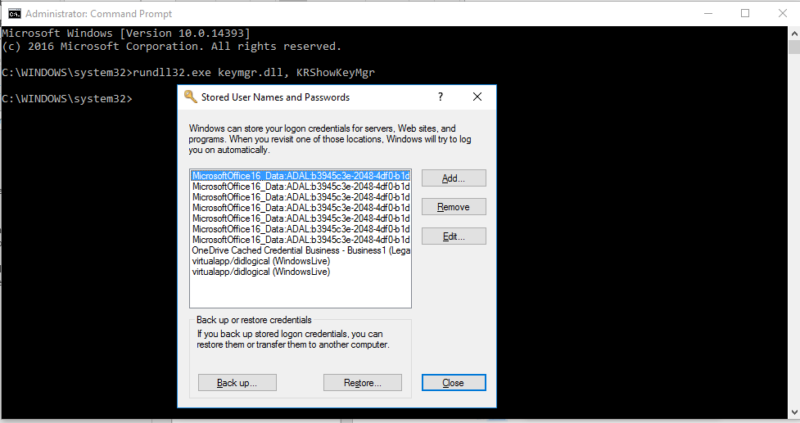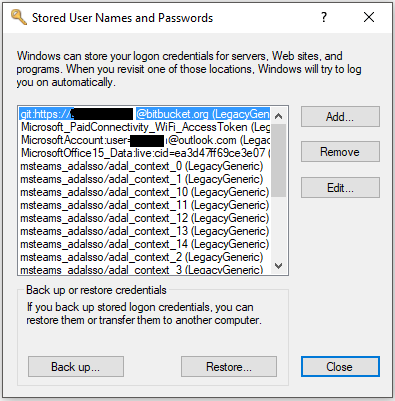

This is a great way to see if, while working on a machine, you’ve accidentally saved your credentials, as any username/password combinations in this list will survive a reboot, and still be available. When you are done using the interface click the Close button Repeat the steps above as needed to add, remove or edit saved passwordsħ. You can add additional saved passwords as well by clicking on the Add button and entering the appropriate informationĦ. Click on OK and the account will be removedĥ. Heres one big list of all the known rundll32 commands and how to set them up.

While Microsoft originally designed rundll32 for internal use, it can also be used to create shortcuts to most Windows settings. To remove a saved password you can select one of the entries and select Remove. Rundll32.exe exists to run programs held in DLL files. Find the credentials you want to delete in the list and delete them. Once the Stored Usernames and Passwords interface opens you can select any of the entries and select Properties to view the existing informationĤ. Type in the following command rundll32.exe keymgr.dll, KRShowKeyMgr.

In the Open field type “rundll32.exe keymgr.dll, KRShowKeyMgr”ģ. Simple, just follow these simple instructions to see all the passwords you’ve cached on your machine: To removed cached credentialsĢ. Ok, so you want to remove that password, but how. This usually happens when you use credentials other than yours to access a resource on your network, or to access a resource on someone else’s network, and you check the “Remember my password” check box. Have you ever tried accessing a network device or resource only to find that last time you accessed that resource, you used a username and password that no longer works, or does not have the proper access.


 0 kommentar(er)
0 kommentar(er)
